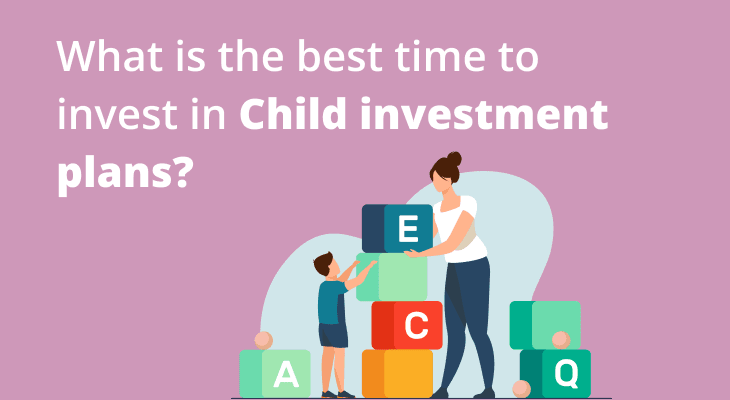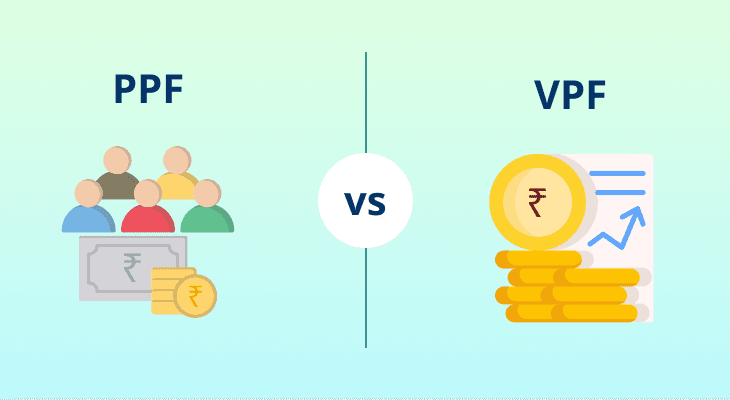
Table of content
- Understanding Child Investment Plans
- Why Timing Matters in Child Investment Plans
- The Ideal Time to Start a Child Saving Plan
- Factors Influencing the Best Time to Invest
- Exploring One-Time Investment Plans for Children
- Popular Child Investment Options in India
- Common Mistakes to Avoid When Investing in Child Plans
What is the best time to invest in Child investment plans?
Planning for a child's future is not just a parental instinct - it's a financial responsibility. With rising education costs, inflation, and increasing aspirations, securing your child’s future through structured financial planning is crucial. Child investment plans offer a disciplined and goal-oriented approach to ensure your child has the financial backing they need for education, health, and personal milestones. But one important question persists: when is the best time to invest in a child savings plan?
Let’s explore this in depth through this blog, focusing on child investment plans and savings plans for kids.
Understanding Child Investment Plans
Child investment plans are financial instruments—usually offered by insurance companies or mutual funds—that allow parents to invest systematically for their child’s future needs. These plans combine the benefits of insurance and investment, offering financial security even in the absence of the earning parent. Some plans come with market-linked returns, while others offer guaranteed benefits at maturity.
They’re not just about savings; they’re about planning with purpose—be it higher education in India or abroad, seed funding for a startup, or even early-stage home ownership.
There are two primary types of child saving plans:
- Regular Premium Plans: Where parents invest a fixed amount regularly.
- One Time Investment Plans for Child: Lump sum investments made once, which grow over time.
Why Timing Matters in Child Investment Plans
The earlier you invest in a savings plan for kids, the more time your money has to grow through the power of compounding.
Consider this: Let’s consider a scenario where you’re planning to fund your child’s engineering education at a top-tier institute in India. Currently, the annual cost stands at around ₹4 lakh, bringing the total for a four-year course to ₹16 lakh.
Now, factor in education inflation - typically around 6% annually and fast forward 15 years. By then, the cost could rise to nearly ₹10 lakh per year, meaning you’d need close to ₹40 lakh to cover the full course.
This sharp increase underlines why early planning through a reliable child investment plan is critical. The longer your investment horizon, the better equipped you’ll be to handle such rising expenses without financial stress.
If you start investing when your child is born, you benefit from 15-18 years of potential compounding, significantly reducing the financial burden closer to your child’s milestone years.
The Ideal Time to Start a Child Saving Plan
The best time to invest is now—ideally at or shortly after your child’s birth.
Here’s why:
- Longer investment horizon = lower risk + higher returns.
- Early investment helps combat inflation over the long term.
- You can afford smaller monthly contributions when you start early, thanks to compounding.
Example:
Let’s say you invest ₹5,000 monthly from your child’s birth (for 18 years) in a plan with an average return of 8%. You’d accumulate over ₹21 lakh by the time your child is 18.
But if you start the same plan when your child is 10 years old, you’d accumulate only around ₹7.6 lakh—a significant difference.
Factors Influencing the Best Time to Invest
While earlier is better, a few key factors may help determine your individual best time to start a child investment plan:
- Your Financial Stability: Begin when you have consistent income and low debt.
- Your Child’s Age: Starting at birth is ideal, but it's never too late to begin.
- Investment Horizon: The number of years before the money is needed.
- Risk Appetite: Younger children allow for more aggressive, equity-linked plans.
- Goals & Milestones: Are you planning for undergrad in India or a master’s abroad? The cost will vary.
Exploring One-Time Investment Plans for Children
For some parents or guardians, investing a lump sum amount through a one time investment plan for child may be more suitable. These plans offer simplicity and a fixed long-term growth trajectory.
Popular One-Time Investment Plans Include:
- Public Provident Fund (PPF): Risk-free, tax-saving, long-term government-backed savings.
- Sukanya Samriddhi Yojana: For girl children, offering an interest rate of 8.2% (as of Q1 FY 2025)
- Single-Premium Child ULIPs: One-time premium with market-linked returns and insurance cover.
- Fixed Deposits in Child’s Name: Low-risk, though lower returns than market-linked options.
These options suit NRIs, grandparents, or guardians who receive windfall gains (like bonuses or inheritances) and wish to set aside money in one go.
Popular Child Investment Options in India
India offers several child-centric investment products that suit various risk profiles:
Plan Type | Plan Example | Key Features |
|---|---|---|
| Insurance-Linked Plans | HDFC Life Young Star Super Premium | Life cover + market-linked growth |
| Government Schemes | Sukanya Samriddhi Yojana, PPF | Guaranteed returns, tax benefits |
| Mutual Funds | SIPs in Equity Mutual Funds | High growth potential, flexible |
| Traditional Savings Plans | LIC Child Future Plan | Guaranteed payouts, long-term savings |
Here’s a Point to Note: Always match your investment vehicle with the goal. For example, use mutual funds or ULIPs for long-term, high-cost goals like overseas education. Use guaranteed plans for conservative goals like basic graduation funding.
Common Mistakes to Avoid When Investing in Child Plans
- Delaying investment – Waiting for the ‘right time’ can cost you lakhs in lost returns.
- Underestimating future costs – Education inflation is real and high.
- Not reviewing plans annually – Goals evolve, and so should your investment strategy.
- Choosing returns over security (or vice versa) – The ideal plan balances both.
- Ignoring insurance cover – Always choose a plan with an in-built or additional life cover.
The best time to invest in a child saving plan is as early as possible—preferably at birth. The longer your investment horizon, the more you benefit from compounding, reduce the financial strain during critical educational years, and align with inflation-adjusted goals.
Whether you opt for a one-time investment plan for a child or a systematic savings plan, what's important is to start with clarity, consistency, and a long-term view. With India’s dynamic financial landscape offering a mix of market-linked and guaranteed child investment plans, young parents and professionals have more tools than ever to ensure their child’s dreams are never limited by finances.
Your child’s dreams deserve to be nurtured with foresight. Start today and let your money grow alongside them.


